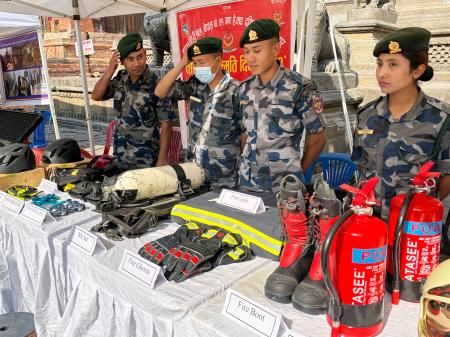Nepal Earthquake: A Decade of Remembrance – Reflecting on Resilience and Recovery
Ten years ago, on April 25th, 2013, a devastating earthquake struck Nepal, leaving an enduring scar on the nation's landscape and the hearts of its people. The 7.8 magnitude quake, followed by a powerful aftershock, claimed thousands of lives, injured countless more, and reduced entire villages to rubble. This article commemorates the anniversary, reflecting on the immense challenges faced and the remarkable resilience shown in the decade since.
The Devastation: A Nation in Ruins
The 2013 Nepal earthquake was a catastrophic event, its impact felt far beyond the immediate epicenter. The UNESCO World Heritage sites of Kathmandu Valley, including Boudhanath Stupa and Pashupatinath Temple, suffered significant damage. Entire mountain villages were wiped out, leaving behind scenes of unimaginable destruction. The death toll reached nearly 9,000, with over 22,000 injured. The economic impact was staggering, with widespread damage to infrastructure, housing, and livelihoods.
Key Impacts of the Earthquake:
- Loss of Life: Thousands perished, including many children.
- Infrastructure Damage: Roads, bridges, schools, and hospitals were severely damaged or destroyed.
- Economic Disruption: The tourism sector, a vital part of Nepal's economy, was severely impacted.
- Displacement of Populations: Hundreds of thousands were left homeless and displaced.
- Psychological Trauma: The earthquake left a lasting impact on the mental health of survivors.
The Road to Recovery: A Decade of Progress
The aftermath of the earthquake saw an outpouring of international aid and support. However, the recovery process has been long and complex, fraught with challenges ranging from bureaucratic hurdles to logistical difficulties in accessing remote areas.
Key Aspects of Recovery Efforts:
- International Aid: Numerous countries and organizations provided financial and logistical support.
- Reconstruction Efforts: The rebuilding of homes, schools, and infrastructure has been a slow but steady process.
- Community Resilience: Local communities played a crucial role in rebuilding their lives and communities.
- Lessons Learned: The disaster highlighted the need for better building codes and disaster preparedness.
- Economic Rehabilitation: Initiatives aimed at reviving the tourism sector and supporting local economies.
Remembering the Victims and Celebrating Resilience
A decade on, Nepal continues its journey towards full recovery. While significant progress has been made, the scars of the 2013 earthquake remain visible. Remembering the victims and acknowledging the ongoing challenges is crucial. However, it's equally important to celebrate the remarkable resilience and determination of the Nepalese people, who have shown an unwavering spirit in rebuilding their lives and their nation.
Looking Ahead: Building a More Resilient Future
The 2013 Nepal earthquake serves as a stark reminder of the vulnerability of communities to natural disasters. The lessons learned from this tragedy underscore the critical need for:
- Improved Building Codes and Practices: Ensuring structures can withstand future seismic activity.
- Enhanced Disaster Preparedness: Implementing early warning systems and developing comprehensive emergency response plans.
- Sustainable Development: Focusing on environmentally responsible and resilient development strategies.
- Continued International Cooperation: Maintaining support for long-term recovery and development.
The anniversary of the 2013 Nepal earthquake provides an opportunity for reflection, remembrance, and a renewed commitment to building a more resilient and safer future for Nepal. Let us honor the memory of those lost and continue supporting the nation's ongoing recovery efforts.
Further Reading:
(Remember to replace the example.com links with actual relevant links.)
